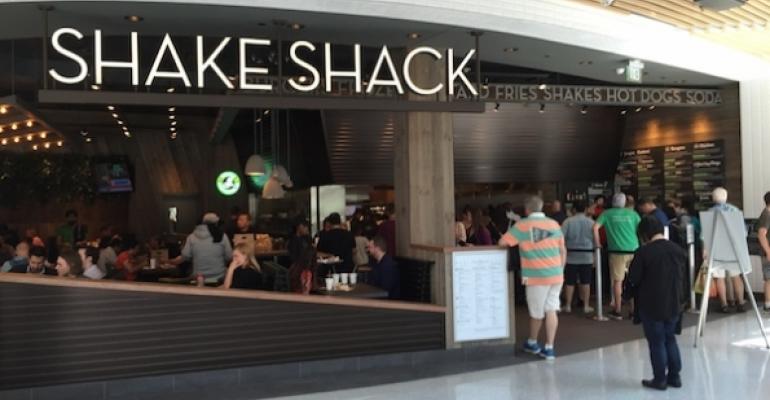 This post is part of the On the Margin blog.
This post is part of the On the Margin blog.
The Mall of America, in Bloomington, Minn., was quiet mid-morning on Thursday — unless you were on the third floor, that is, where a line at least 50 strong had developed 20 minutes before the opening of the state’s first Shake Shack.
That line continued there through lunch, as burger lovers and curiosity seekers sought their first taste of the famous chain, as a drum line played and passers by snapped pictures.
The location represents a key test for Shake Shack. The chain has 57 locations in the U.S., and has opened recently in places like Arizona and Los Angeles. It was born in New York, however, where the chain is a phenomenon and long lines are the norm.
Yet if the concept is to continue its growth domestically, it has to work in places like this, in the Upper Midwest and away from the country’s major population centers.
“We feel very strongly that Shake Shack belongs in many different places — in big cities and in small cities,” said Andrew McCaughan, vice president of development for the chain. “It’s versatile. We can take it to a lot of different real estate formats.”
“We have a wide demographic,” he added. “It’s still just a $5 hamburger joint. That’s what’s fun about it.”
In addition, this is the chain’s first domestic location inside an indoor mall, testing Shake Shack’s ability to generate traffic without an on-the-street entrance.
To be sure, the Mall of America isn’t just any mall. It brings in 40 million people every year, 40 percent of whom are tourists. It boasts its own aquarium and amusement park and is currently working on an expansion expected to draw another 20 million visitors. The mall even has its own ZIP code.
“The Mall of America is legendary,” McCaughan said.
Shake Shack’s location is in a prime corner in a new food court being developed on the Mall of America’s third floor. But much of the lunch-going traffic is still in a different part of the mall.
“You have to do a little more wayfinding,” said Zach Koff, senior vice president of operations. “If you Google the address, there’s just a big mall. It’s something you have to navigate.”
At the same time, the chain has proven to be a draw, as it did on Thursday, when a sizable percentage of the mall’s morning visitors were standing in line at Shake Shack.
But that’s what Shake Shack does, at least for now: It generates traffic. The chain’s locations are known for their lines and ultra-strong unit volumes — which last year exceeded $4.9 million, extraordinary for a fast-casual chain.
That makes Shake Shack a prime get for landlords. With retail foot traffic on the decline, more malls have turned to entertainment to generate traffic. And destination restaurants have become key tenants.
The Mall of America’s new food court is a perfect example. While it includes a Burger King, a fry shop and a Japanese restaurant, it also includes hot fast-casual chains like Piada Italian Street Food and The Melt. Naf Naf Grill expects to open there this spring.
“We know we bring a lot of traffic,” McCaughan said. “Landlords love that.”
McCaughan said that the mall will bring traffic, and so will Shake Shack, and so they will help one another.
He also said that, though it is enclosed, the mall location reflects the chain’s ability to go into different types of locations and still succeed. He also said the site fits the chain’s needs.
“We are going after one-of-a-kind, A-plus real estate,” he said. “We can go into a lot of different types of real estate. This place is unique. It fits our criteria. It has a lot of international guests, and a lot of tourists.”
McCaughan also said the chain doesn’t just look for any site. The company targets places that can be community gathering spots.
“To me, it’s about a community gathering place,” he said. “When we put restaurants in the right places, in the right locations, where people are excited about the brand and want to have a place to hang out. I don’t think that works in just any location.”
Contact Jonathan Maze at [email protected]
Follow him on Twitter: @jonathanmaze

